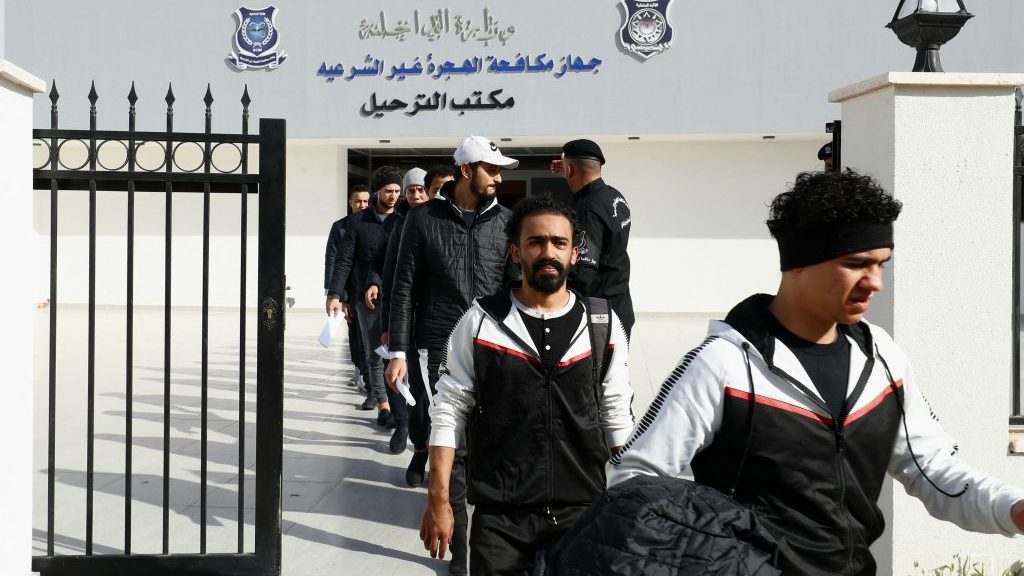Libya Is Deadliest Launching Pad for Illegal Immigration to Europe
International Organization for Migration reports over 20,000 migrants rescued from Mediterranean Sea in 2022 and returned to Libya
Over 20,000 migrants have been rescued from migration attempts via the Mediterranean Sea and returned to Libya so far in 2022, the International Organization for Migration (IOM) reported.
According to figures presented in the report released on Monday, which come from information that the organization collects in ports in Libya, of the 20,842 migrants that have been returned to Libya, 19,075 were men, 1,089 were women, and 678 were children.
IOM Libya, also reports that 514 have died on this migration route, and another 865 migrants went missing this year.
Libya is considered one, if not the most common, of the routes of illegal migration to Europe for several reasons.
Loren B. Landau, a senior migration researcher at the University of Oxford and the University of the Witwatersrand in Johannesburg, told The Media Line that this is in part because of Libya’s proximity to Europe. “If people are traveling across the water, it is a relatively short journey,” he explained.
However, he adds that Libya also is a country that has an extended, relatively permeable border to the south, so it is accessible from sub-Saharan Africa.
Silvia Boltuc, managing director of SpecialEurasia, a geopolitical analysis platform, adds that Libya has about 1,400 km of border with Niger and Chad, which lies on an uninhabited desert that is challenging to monitor.
Over time, she told The Media Line, “the borders have come under the control of different ethnic groups who have understood how the trafficking of migrants is profitable.”
Boltuc explains that this route has a long history since, in the 90s, there was a solid sub-Saharan migration to Moammar Gadhafi’s Libya, which welcomed many foreign workers.
“These people remained in the country, and today provide assistance to those who want to reach Libya and migrate to Europe, despite the detention camps that are the consequence of European policies,” she said.
Give the gift of hope
We practice what we preach:
accurate, fearless journalism. But we can't do it alone.
- On the ground in Gaza, Syria, Israel, Egypt, Pakistan, and more
- Our program trained more than 100 journalists
- Calling out fake news and reporting real facts
- On the ground in Gaza, Syria, Israel, Egypt, Pakistan, and more
- Our program trained more than 100 journalists
- Calling out fake news and reporting real facts
Join us.
Support The Media Line. Save democracy.


The borders have come under the control of different ethnic groups who have understood how the trafficking of migrants is profitable
The North African country’s instability, corruption and criminality also are factors that Boltuc attributes to the popularity of this migration route. These characteristics, she said, “make transit through Libya easier than through other Northern African countries with tighter border controls and harsher sentences for traffickers.”
Ambassador Namira Negm, director of the African Observatory on Migration and the former Egyptian ambassador to Rwanda, told The Media Line that some information indicates that migrants are now used by networks in Libya involved in smuggling and human trafficking, which receive sums of money to assist the migrants to board unsafe boats and use the proceeds to support other, likely illicit, activities.
In Libya, she says, migration mostly comes from sub-Saharan Africa and its Gulf of Guinea, and that some migrants also arrive in Libya from neighboring countries.
Landau says that often among the migrants there is a significant representation of people from West African countries, the horn of Africa, and even some traveling overland from Syria, Afghanistan and other locations.
Negm points out that the migration reports indicate that the estimated numbers of international migrants are on the rise and “it seems that it will continue to rise because of security, climate change and other socioeconomic factors.”
Despite its popularity, using Libya as a jumping-off point to Europe is described by the IOM as the deadliest known migration route in the world due to both the “dangerous voyage across the Sahara Desert” during which the migrants stay in Libya, and the “unnecessary and tragic deaths at sea.” The latter is proved by the number of dead and missing migrants reported.
Landau notes that those intercepted at sea while attempting to reach Europe face multiple outcomes depending on where, and who, has intercepted them.
If the Libyan coast guard does the interception, he notes, “they will be returned to Libya and often detained or released back into Africa.” If it is Frontex – the European agency protecting the borders of the EU – or European coast guards which catch the migrants, “they may also be sent back or, depending on the territorial waters, taken to land in Europe where they may be detained or given the opportunity to apply for asylum,” according to Landau. He adds that some are rescued by NGOs which work to ensure that the migrants arrive on land safely and receive some level of protection.
The EU is committed to increasing cooperation with Libya and tackling migrant smugglers by training Libyan coast guards, supporting local communities, improving border management and protecting and assisting migrants and refugees
In cases where the migrants manage to survive the voyage and arrive in Europe without being intercepted, Negm explains that there are two possible scenarios.
The first, she says, “is to manage to run away from all security personnel and land a menial job without appropriate documentation, until they pass a period of time and attempt to adjust the situation to be able to issue documentation of temporary residency.”
The second, which is most likely to happen, she adds, is that they get arrested and are subjected to interrogation by the police after which the interview determines their status.
If they are considered asylum seekers, she notes, their documents are processed as such, and then they are considered to be refugees. Yet, if it is determined that the migrants are only there for economic reasons, they are considered illegal migrants and are sent to detention centers until they are deported.
Boltuc adds that as a result of EU actions to address the migration situation, the Central Mediterranean route has seen a significant decrease in arrivals from Libya since 2017.
Nevertheless, she continues, “the EU is committed to increasing cooperation with Libya and tackling migrant smugglers by training Libyan coast guards, supporting local communities, improving border management and protecting and assisting migrants and refugees.”
Furthermore, she says that Europe is working to address issues that trigger migrants to flee, such as underdevelopment, war and climate change.

